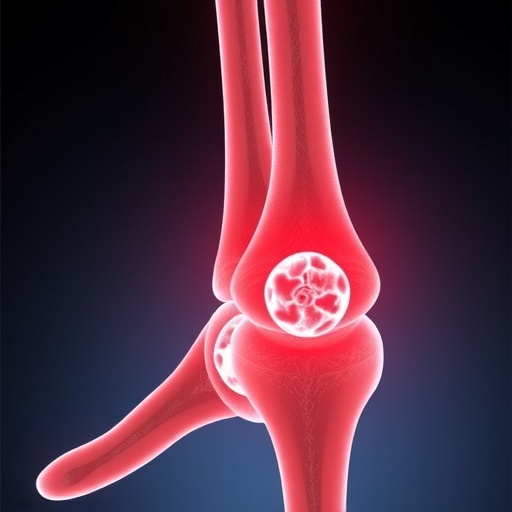Researchers at Osaka Metropolitan University have made a significant breakthrough in the treatment of osteoporotic vertebral fractures using adipose-derived stem cell (ADSC) technology. Osteoporosis, a debilitating condition characterized by bone fragility and enhanced fracture risk, affects millions worldwide, especially in aging populations. Spinal compression fractures, which are among the most frequent and severe complications of osteoporosis, drastically reduce mobility and quality of life. This novel treatment approach leverages the multipotency of ADSCs, whereby stem cells harvested from fatty tissue are artificially developed into bone-specific spheroids to stimulate bone regeneration and repair.
Adipose tissue, often overlooked as a source of valuable medical material, offers a uniquely accessible and minimally invasive donor source for stem cells. ADSCs present an ideal therapeutic candidate due to their capability to differentiate into multiple cell lineages and their relative ease of collection, even from elderly or compromised patients who are unsuitable for more invasive tissue harvesting procedures. The research team capitalized on this versatility by cultivating ADSCs into three-dimensional spheroid clusters. These spheroids mimic natural cell microenvironments and potentiate the cells’ regenerative properties significantly compared to traditional two-dimensional cultures.
The differentiation of ADSC spheroids toward the osteogenic lineage—bone-forming cells—marks a pivotal advancement in stem cell therapy for bone diseases. By pre-conditioning these spheroids to promote bone cell characteristics prior to transplantation, the researchers enhanced the cells’ intrinsic ability to stimulate bone repair. Combining these osteogenically primed spheroids with β-tricalcium phosphate (β-TCP), a synthetic biomaterial widely used in orthopedic implants and considered biocompatible and osteoconductive, formed a composite that synergistically promoted new bone growth in vivo.
The experimental study employed a rat model exhibiting spinal fractures comparable to human osteoporotic vertebral fractures, thereby providing a relevant preclinical platform to evaluate therapeutic efficacy. The treated animals demonstrated marked improvements in spinal bone strength and structural integrity as early as eight weeks post-treatment. Histological analyses confirmed successful new bone formation and integration with the implanted spheroid-β-TCP composite. Furthermore, molecular profiling revealed significant upregulation of key osteogenic genes involved in bone matrix synthesis and mineralization, indicating robust activation of intrinsic bone regeneration pathways.
One of the notable aspects of this treatment is the minimal physiological burden it imposes. Unlike conventional interventions that often involve invasive surgery, prolonged immobilization, or high-dose pharmaceuticals with systemic side effects, the ADSC spheroid approach derives cells from the patients’ own fat stores. This autologous sourcing not only reduces immunogenic complications but also facilitates outpatient procedures, thus potentially transforming patient care by shortening recovery times and minimizing hospitalization.
Yuta Sawada, a graduate student involved in the study, emphasized the clinical potential of this approach, highlighting that the procedure “ensures patient safety by minimizing bodily stress.” Co-lead Dr. Shinji Takahashi confirmed the broader implications, stating that “this simple, yet highly effective method offers a novel solution for treating even complicated fractures, thereby accelerating the healing process and extending healthy lifespans for patients suffering from osteoporosis.”
The integration of ADSC-derived spheroids with biomaterials like β-TCP underscores a paradigm shift towards tissue-engineered therapeutics that combine cellular therapy with advanced scaffold technology. This dual-faceted strategy not only provides a biological stimulus for new bone formation but also mechanical support for maintaining spinal stability during the regenerative process. Such combinatorial therapies may bridge the current gap between symptomatic fracture management and true disease modification in osteoporosis.
Osteoporotic vertebral fractures constitute a substantial socioeconomic burden worldwide. With an aging global population and the current estimate of over 15 million osteoporosis patients in Japan alone, innovations in regenerative medicine are urgently needed. This research represents a promising step forward, not just for spinal fractures but also for broader orthopedics applications, including complex nonunion fractures and bone defects resulting from trauma or surgery.
Future investigations will seek to translate these compelling preclinical results into human clinical trials, optimizing cell sourcing, differentiation protocols, and scaffold formulations to maximize efficacy and safety. Questions remain surrounding long-term durability, the optimal timing for intervention post-fracture, and potential combinational approaches with pharmacotherapy. Nonetheless, the work spearheaded by Osaka Metropolitan University establishes a foundational platform for next-generation regenerative therapies in bone medicine.
Published in the peer-reviewed journal Bone & Joint Research, this study epitomizes interdisciplinary collaboration between regenerative biology, materials science, and clinical orthopedics. The findings herald a new era in osteoporosis treatment, where cellular therapeutics could supplant or significantly enhance existing modalities. Such innovation promises not only to restore skeletal integrity but also to improve the overall health outcomes and quality of life for millions of aging individuals globally.
The successful utilization of ADSCs from adipose tissue emphasizes the untapped potential of stem cell sources previously regarded as auxiliary. As the field advances, the refinement of three-dimensional culture methods, cell differentiation techniques, and biomaterial integration will inevitably unlock further clinical applications. This breakthrough thus marks a compelling example of bench-to-bedside translation, shedding light on future regenerative strategies for musculoskeletal disorders.
This pioneering research provides hope for patients, clinicians, and scientists alike by demonstrating that safe, effective, and minimally invasive treatment for debilitating spinal fractures is within reach. The convergence of stem cell science, biomaterials engineering, and innovative delivery approaches exemplifies the dynamic progress in biomedical technologies aimed at extending healthy life expectancy and enabling active aging worldwide.
Subject of Research: Animals
Article Title: Development of a new treatment for osteoporotic vertebral fractures using adipose-derived stem cell spheroids
News Publication Date: 28-Oct-2025
Web References: http://dx.doi.org/10.1302/2046-3758.1410.BJR-2025-0092.R1
References: Bone & Joint Research Journal
Image Credits: Osaka Metropolitan University
Keywords: adipose-derived stem cells, ADSC spheroids, osteoporosis treatment, osteoporotic vertebral fractures, bone regeneration, β-tricalcium phosphate, bone-differentiated spheroids, spinal fractures, regenerative medicine, tissue engineering, bone healing, stem cell therapy




